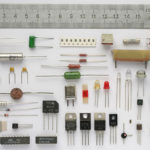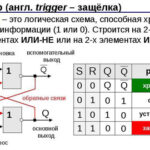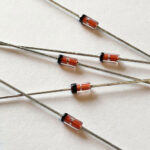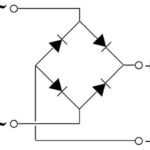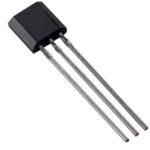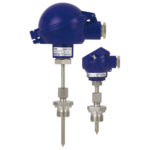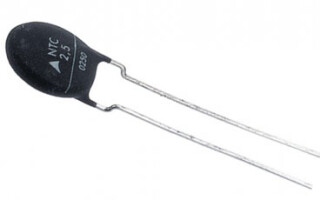The resistance of any conductor generally depends on temperature. The resistance of metals increases with heat. From the point of view of physics, this is explained by an increase in the amplitude of thermal vibrations of the elements of the crystal lattice and an increase in the resistance to movement of a directed electron flow. The resistance of electrolytes and semiconductors decreases when heated - this is explained by other processes.
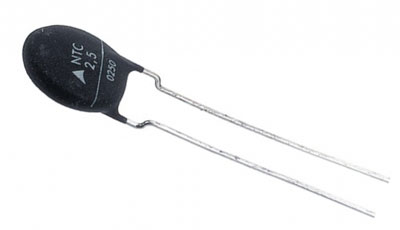
Content
How the thermistor works
In many cases, the phenomenon of temperature dependence of resistance is harmful. So, the low resistance of the filament of an incandescent lamp in a cold state causes a burnout at the moment of switching on. Changing the value of the resistance of fixed resistors during heating or cooling leads to a change in the parameters of the circuit.
Developers are struggling with this phenomenon, resistors are produced with a reduced TCR - the temperature coefficient of resistance. Such items are more expensive than usual. But there are such electronic components in which the dependence of resistance on temperature is pronounced and normalized. These elements are called thermistors (thermal resistances) or thermistors.
Types and device of thermistors
Thermistors can be divided into two large groups according to their response to temperature changes:
- if the resistance drops when heated, such thermistors are called NTC thermistors (with negative temperature coefficient of resistance);
- if the resistance increases during heating, then the thermistor has a positive TCR (PTC characteristic) - such elements are also called posistors.
The type of thermistor is determined by the properties of the materials from which the thermistors are made. When heated, metals increase resistance, therefore, on their basis (more precisely, on the basis of metal oxides), thermal resistances with a positive TCR are produced. Semiconductors have an inverse relationship, so NTC elements are made from them. Thermally dependent elements with negative TCR can theoretically be made on the basis of electrolytes, but this option is extremely inconvenient in practice. His niche is laboratory research.
The design of thermistors can be different. They are produced in the form of cylinders, beads, washers, etc. with two outputs (like conventional resistor). You can choose the most convenient form for installation in the workplace.
Main characteristics
The most important characteristic of any thermistor is its temperature coefficient of resistance (TCR).It shows how much the resistance changes when heated or cooled by 1 degree Kelvin.
Although the change in temperature, expressed in degrees Kelvin, is equal to the change in degrees Celsius, Kelvin is still used in the characteristics of thermal resistance. This is due to the widespread use of the Steinhart-Hart equation in calculations, and it includes temperature in K.
TCR is negative for NTC type thermistors and positive for PTC thermistors.
Another important characteristic is the nominal resistance. This is the resistance value at 25°C. Knowing these parameters, it is easy to determine the applicability of thermal resistance for a particular circuit.
Also, for the use of thermistors, characteristics such as rated and maximum operating voltage are important. The first parameter determines the voltage at which the element can operate for a long time, and the second - the voltage above which the performance of the thermal resistance is not guaranteed.
For posistors, an important parameter is the reference temperature - the point on the graph of the dependence of resistance on heating, at which the characteristic changes. It defines the working area of the PTC resistance.
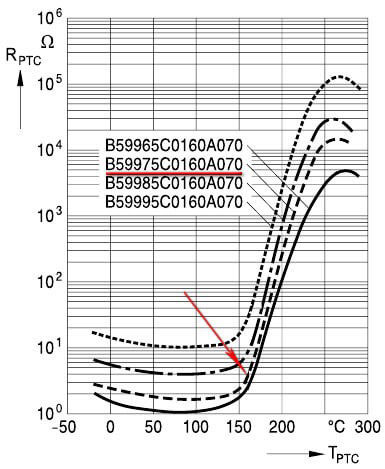
When choosing a thermistor, you need to pay attention to its temperature range. Outside the area specified by the manufacturer, its characteristic is not standardized (this can lead to errors in the operation of the equipment) or the thermistor is generally inoperable there.
Conditional graphic designation
On the diagrams, the UGO of the thermistor may differ slightly, but the main sign of the thermal resistance is the symbol t next to the rectangle symbolizing the resistor.Without this symbol, it is impossible to determine what the resistance depends on - similar UGOs have, for example, varistors (resistance is determined by the applied voltage) and other elements.
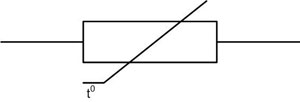
Sometimes an additional designation is applied to the UGO, which determines the category of the thermistor:
- NTC for elements with negative TCS;
- PTC for posistors.
This characteristic is sometimes indicated by arrows:
- unidirectional for PTC;
- multidirectional for NTC.
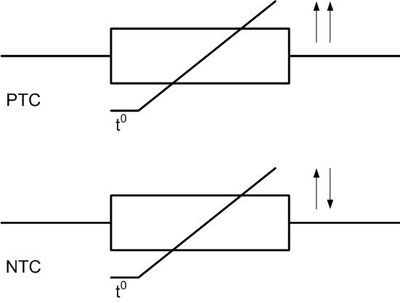
The letter designation can be different - R, RK, TH, etc.
How to check the thermistor for performance
The first check of the thermistor is to measure the nominal resistance with a conventional multimeter. If the measurement is carried out at room temperature, which is not very different from +25 ° C, then the measured resistance should not differ significantly from that indicated on the case or in the documentation.
If the ambient temperature is above or below the specified value, a small correction must be taken.
You can try to take the temperature characteristic of the thermistor - to compare it with the one specified in the documentation or to restore it for an element of unknown origin.
There are three temperatures available to create with sufficient accuracy without measuring instruments:
- melting ice (can be taken in the refrigerator) - about 0 ° C;
- human body - about 36 ° C;
- boiling water - about 100 ° C.
From these points, you can draw an approximate dependence of resistance on temperature, but for posistors this may not work - on the graph of their TKS, there are areas where R is not determined by temperature (below the reference temperature).If there is a thermometer, you can take a characteristic at several points - by lowering the thermistor into water and heating it. Every 15 ... 20 degrees, it is necessary to measure the resistance and plot the value on the graph. If you need to take parameters above 100 degrees, instead of water, you can use oil (for example, automotive - motor or transmission).
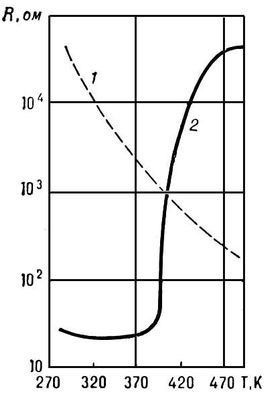
The figure shows typical dependences of resistance on temperature - a solid line for PTC, a dashed line for NTC.
Where applicable
The most obvious use of thermistors is as temperature sensors. Both NTC and PTC thermistors are suitable for this purpose. It is only necessary to select an element according to the working area and take into account the characteristic of the thermistor in the measuring device.
You can build a thermal relay - when the resistance (more precisely, the voltage drop across it) is compared with a given value, and when the threshold is exceeded, the output switches. Such a device can be used as a thermal control device or a fire detector. The creation of temperature meters is based on the phenomenon of indirect heating - when the thermistor is heated from an external source.
Also in the field of using thermal resistances, direct heating is used - the thermistor is heated by the current passing through it. NTC resistors can be used in this way to limit the current - for example, when charging large capacitors when turned on, as well as to limit the starting current of electric motors, etc. In a cold state, thermally dependent elements have a large resistance.When the capacitor is partially charged (or the motor reaches its rated speed), the thermistor will have time to heat up with the flowing current, its resistance will drop, and it will no longer affect the operation of the circuit.
In the same way, you can extend the life of an incandescent lamp by including a thermistor in series with it. It will limit the current at the most difficult moment - when the voltage is turned on (it is at this time that most lamps fail). After warming up, it will cease to affect the lamp.
On the contrary, thermistors with a positive characteristic are used to protect electric motors during operation. If the current in the winding circuit rises due to a stalled motor or excessive shaft load, the PTC resistor will heat up and limit this current.
NTC thermistors can also be used as thermal compensators for other components. So, if an NTC thermistor is installed in parallel with the resistor that sets the transistor mode and has a positive TKS, then the temperature change will affect each element in the opposite way. As a result, the effect of temperature is compensated, and the operating point of the transistor does not shift.
There are combined devices called thermistors with indirect heating. In one case of such an element, a temperature-dependent element and a heater are located. There is thermal contact between them, but they are galvanically isolated. By varying the current through the heater, the resistance can be controlled.
Thermistors with various characteristics are widely used in engineering. In addition to standard applications, their scope of work can be expanded.Everything is limited only by the imagination and qualifications of the developer.
Similar articles:
